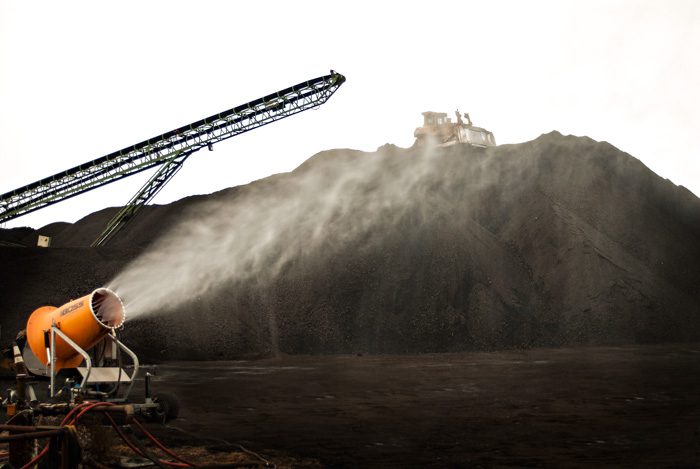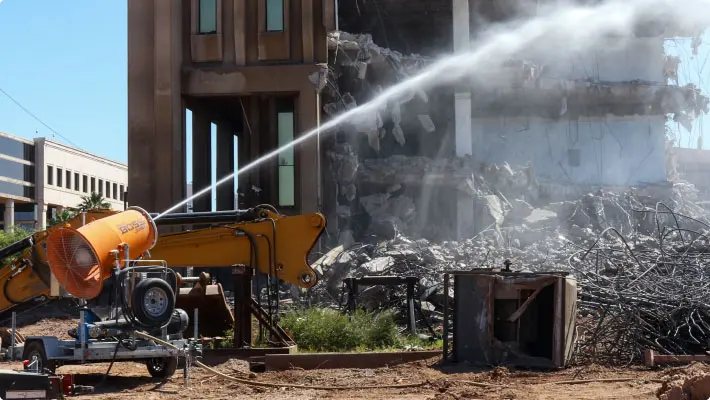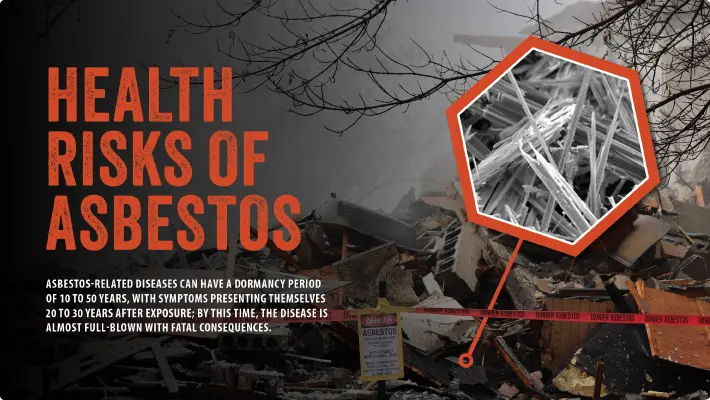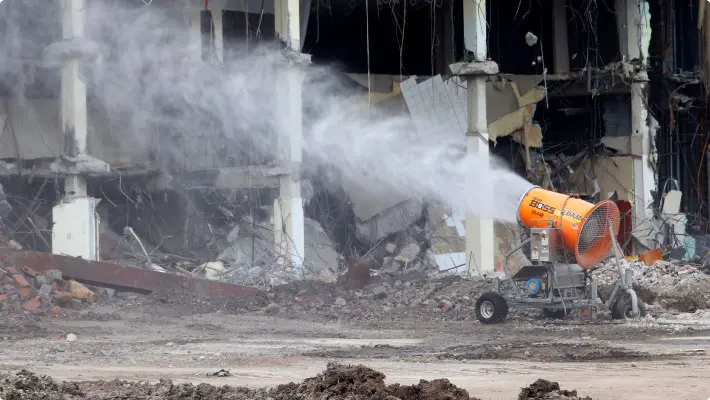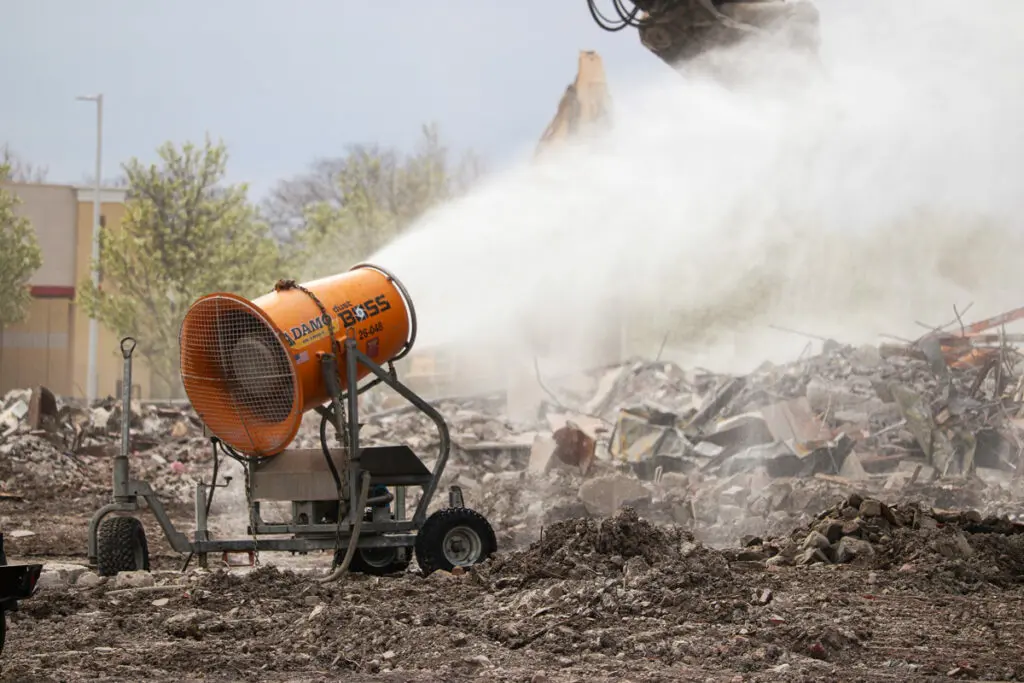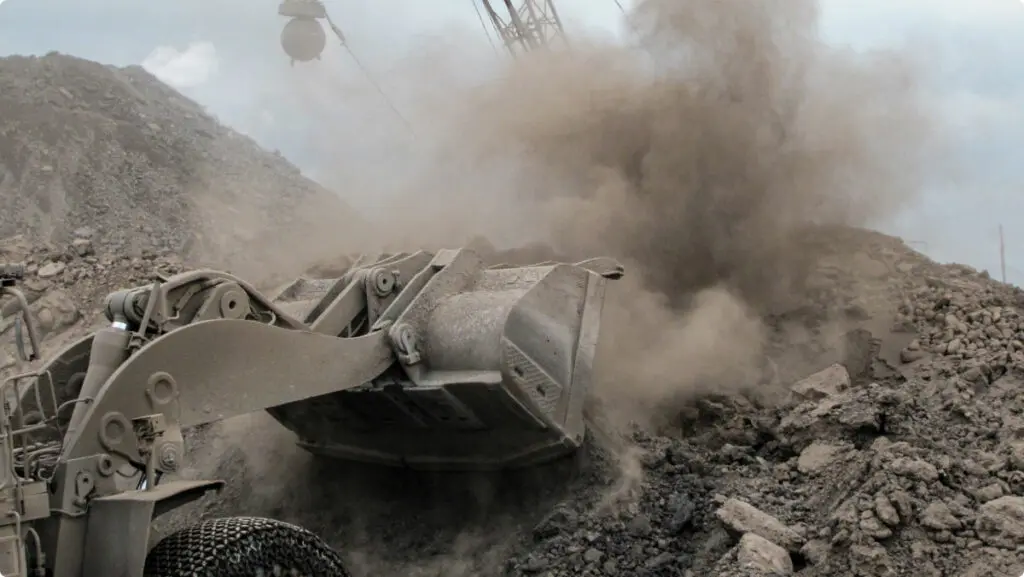When a leading U.S. coal handler needed to improve on its inefficient sprinkler system for suppressing airborne dust, site operators wanted a more effective method of control, one that would leave little or no standing water to create a potential hazard to pedestrians or vehicles.
With 120 acres of potential storage space, a portable dust suppression system would have definite advantages, but suppression efficiency was critical.
“We had been using a system of nozzles on a spray bar,” the site manager said. “But the technique wasn’t as effective as we would have liked, and it caused significant puddling in some areas. That meant we were also wasting water."
The Coal Handling Facility
This customer’s primary business is the unloading, storing, and distribution of dry bulk commodities to and from barge, rail, and truck carriers.
"We operate the DustBoss when we’re moving bulk coal.
It’s used primarily during warm, dry weather, when conditions are most likely to cause a dust issue. It’s been a very effective control technique for us."
- site manager
The company often handles vast amounts of coal, fertilizer, seed, animal feed, salt, even fish meal. Located directly on a large rail line, the site features a 20-acre protected harbor situated on a major river, giving shippers a rare choice of transportation methods.
Together with its sister companies, the firm provides intermodal transfer, storage, and distribution of a wide range of dry commodity products. The materials handling system is impressive, with a bottom-dump train unloading system that transfers product direct to a waiting barge or to ground storage at a rate of up to 1,000 net tons per hour.
Multiple barge unloading docks provide access to 150,000 square feet of inside storage, as well as many acres of outdoor storage via portable conveying equipment. For moving bulk products, the facility operates four front-end loaders, a 50-ton crane, an extensive network of portable conveyors and a rail locomotive.
Designed for Dust Control
After investigating a number of alternatives, company officials specified the DustBoss DB-60, known workhorse dust suppression equipment. The oscillating ducted fan features 30 specially-designed nozzles, developed to atomize droplets to just the right size for maximum dust capture.
Airborne water droplets and fugitive dust particles will collide more readily when they’re about the same size. The DustBoss atomizes the water to 50–200 microns, which gives us the best attraction and helps avoid a slipstream effect. Unlike many dust control techniques on the market, the DustBoss series is designed specifically for dust suppression.
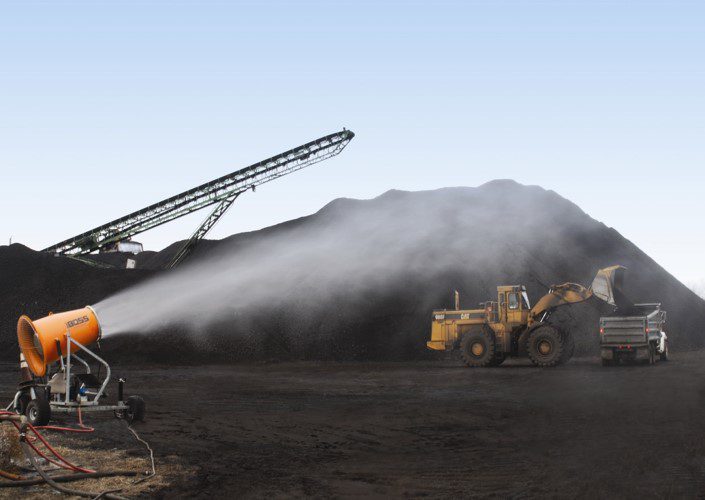
The DB-60 also incorporates a 10 HP booster pump for increasing water pressure by as much as 150 psi. With its powerful 25 HP fan, the unit can generate as much as 30,000 CFM of air, giving it a throw range of more than 200 feet.
Operators can now blanket as much as 21,000 square feet (1,950 square meters) with a water-conserving mist of ultra-fine droplets. Fed by a 2-1/2" quick-disconnect hose, the unit requires just 10 psi of constant pressure.
The DB-60 can be set up to run from a potable or non-potable water supply.
“We operate the DustBoss when we’re moving bulk coal,” the site manager said. “It’s used primarily during warm, dry weather, when conditions are most likely to cause a dust issue. It’s been a very effective control technique for us."
The versatile, carriage-mounted DB-60 also allows operators to locate the unit wherever particle suppression might be needed on a given day. Known for its durable construction and reliable service, the DB-60 typically requires minimal maintenance. The nozzles need to be inspected once a year if using a potable water supply, the fan motor should be lubricated about once every five years, depending on the service environment, and the oscillator is greased for life.
CUSTOMER
A leading U.S. coal handling facility
LOCATION
Midwestern United States
CHALLENGE
Control coal dust at a company specializing in the unloading, storage and loading of dry bulk commodities, including coal, fertilizer, seed and animal feed. The goal was to extend air filter life on loading equipment, reduce standing water and maintain good health/safety conditions, replacing marginally effective sprinklers.
SOLUTION
The DustBoss® 60 (DB-60), a powerful ducted fan design with a 25 HP motor that generates 30,000 CFM, capable of covering as much as 21,000 square feet (1,950 square meters) with a fine mist of atomized droplets for outstanding dust control.
RESULTS
The facility reports excellent dust suppression using less water than the previous sprinkler system, without the standing water that was a common complaint of the sprinklers. In addition to the health and environmental benefits of capturing airborne dust, operators expect to extend air filter life in loaders and other heavy equipment.
When a leading U.S. coal handler needed to improve on its inefficient sprinkler system for suppressing airborne dust, site operators wanted a more effective method of control, one that would leave little or no standing water to create a potential hazard to pedestrians or vehicles.
With 120 acres of potential storage space, a portable dust suppression system would have definite advantages, but suppression efficiency was critical.
“We had been using a system of nozzles on a spray bar,” the site manager said. “But the technique wasn’t as effective as we would have liked, and it caused significant puddling in some areas. That meant we were also wasting water."
The Coal Handling Facility
This customer’s primary business is the unloading, storing, and distribution of dry bulk commodities to and from barge, rail, and truck carriers.
"We operate the DustBoss when we’re moving bulk coal.
It’s used primarily during warm, dry weather, when conditions are most likely to cause a dust issue. It’s been a very effective control technique for us."
- site manager
The company often handles vast amounts of coal, fertilizer, seed, animal feed, salt, even fish meal. Located directly on a large rail line, the site features a 20-acre protected harbor situated on a major river, giving shippers a rare choice of transportation methods.
Together with its sister companies, the firm provides intermodal transfer, storage, and distribution of a wide range of dry commodity products. The materials handling system is impressive, with a bottom-dump train unloading system that transfers product direct to a waiting barge or to ground storage at a rate of up to 1,000 net tons per hour.
Multiple barge unloading docks provide access to 150,000 square feet of inside storage, as well as many acres of outdoor storage via portable conveying equipment. For moving bulk products, the facility operates four front-end loaders, a 50-ton crane, an extensive network of portable conveyors and a rail locomotive.
Designed for Dust Control
After investigating a number of alternatives, company officials specified the DustBoss DB-60, known workhorse dust suppression equipment. The oscillating ducted fan features 30 specially-designed nozzles, developed to atomize droplets to just the right size for maximum dust capture.
Airborne water droplets and fugitive dust particles will collide more readily when they’re about the same size. The DustBoss atomizes the water to 50–200 microns, which gives us the best attraction and helps avoid a slipstream effect. Unlike many dust control techniques on the market, the DustBoss series is designed specifically for dust suppression.

The DB-60 also incorporates a 10 HP booster pump for increasing water pressure by as much as 150 psi. With its powerful 25 HP fan, the unit can generate as much as 30,000 CFM of air, giving it a throw range of more than 200 feet.
Operators can now blanket as much as 21,000 square feet (1,950 square meters) with a water-conserving mist of ultra-fine droplets. Fed by a 2-1/2" quick-disconnect hose, the unit requires just 10 psi of constant pressure.
The DB-60 can be set up to run from a potable or non-potable water supply.
“We operate the DustBoss when we’re moving bulk coal,” the site manager said. “It’s used primarily during warm, dry weather, when conditions are most likely to cause a dust issue. It’s been a very effective control technique for us."
The versatile, carriage-mounted DB-60 also allows operators to locate the unit wherever particle suppression might be needed on a given day. Known for its durable construction and reliable service, the DB-60 typically requires minimal maintenance. The nozzles need to be inspected once a year if using a potable water supply, the fan motor should be lubricated about once every five years, depending on the service environment, and the oscillator is greased for life.
Implement Dust Control at Your Jobsite!
Receive a FREE quote and talk to a dust control specialist today to stop fugitive dust!
Get A Quote
More on BossTek
Subscribe and Stay Up-to-Date!
Receive a monthly newsletter keeping you up-to-date on the latest in dust and odor control.
Subscribe
